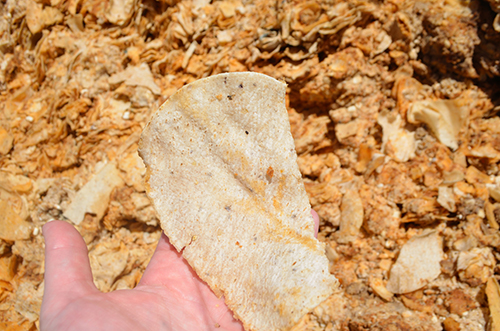
A staple in many dairy rations, by-products are seeing increased use as producers attempt to replace higher-cost ingredients and meet their herds' nutrient requirements. For ruminants though, most of the attention has centered on it as a source of greenhouse gas (GHG) emissions. There has been little to no mention of how dairy cattle reduce the GHG production of the human food industry.
"Cattle are fed the waste products of human food production that would otherwise need to be disposed of through composting or combustion, both of which result in carbon dioxide emissions. Cows convert these waste products into high-quality protein foods (meat and milk) thereby reducing GHG emissions," noted Kurt Cotanch in a recent Miner Institute Farm Report. These comments tied to research findings from Cornell University regarding the relationship between human food production and dairy cattle feedstuffs.
These researchers compare the GHG emissions from feeding these waste products to cattle versus disposing of them through combustion. Nutritionists from 10 states were surveyed diet, milk production and feed ingredient information.
The average by-product content of the diets was 31.3 percent, ranging between 12.7 and 56.7 percent. The five by-products contributing most to overall dry matter were dry corn-gluten feed, corn ethanol distillers, soybean meal, fuzzy cottonseed and canola meal.
With a diet composed of 31 percent by-products, predicted total GHG release was 9.0 kg of CO2 equivalents per cow per day. Had the by-products been burned as waste material, 46.2 kg of CO2 would be released. This is nearly a five-fold reduction in potential GHG emissions.
Feeding by-products reduces the likelihood that industries will dispose of unavoidable waste products in less environmentally friendly ways. In comparison to combustion, rumen digestion of by-product carbon emits significantly fewer greenhouse gases and recycles carbon into milk and food for human consumption and manure that is reused in more productive ways.
The use of by-products in dairy diets reduces the environmental impact of human food production and enhances the efficiency of the industry. It does so by making use of feed components that do not compete with the human food chain, but compliment it.
With the expected increases in human population over the next 50 years, there will be elevated production of by-products from the food system for humans. These additional materials will require disposal through mechanisms like cattle, not landfills, if we are to maintain or enhance the efficiency of human food production with reduced resources.
It's a positive message tied to our environmental stewardship that we, as an industry, must tout.

The author, Amanda Smith, was an associate editor and is an animal science graduate of Cornell University. Smith covers feeding, milk quality and heads up the World Dairy Expo Supplement. She grew up on a Medina, N.Y., dairy, and interned at a 1,700-cow western New York dairy, a large New York calf and heifer farm, and studied in New Zealand for one semester.








